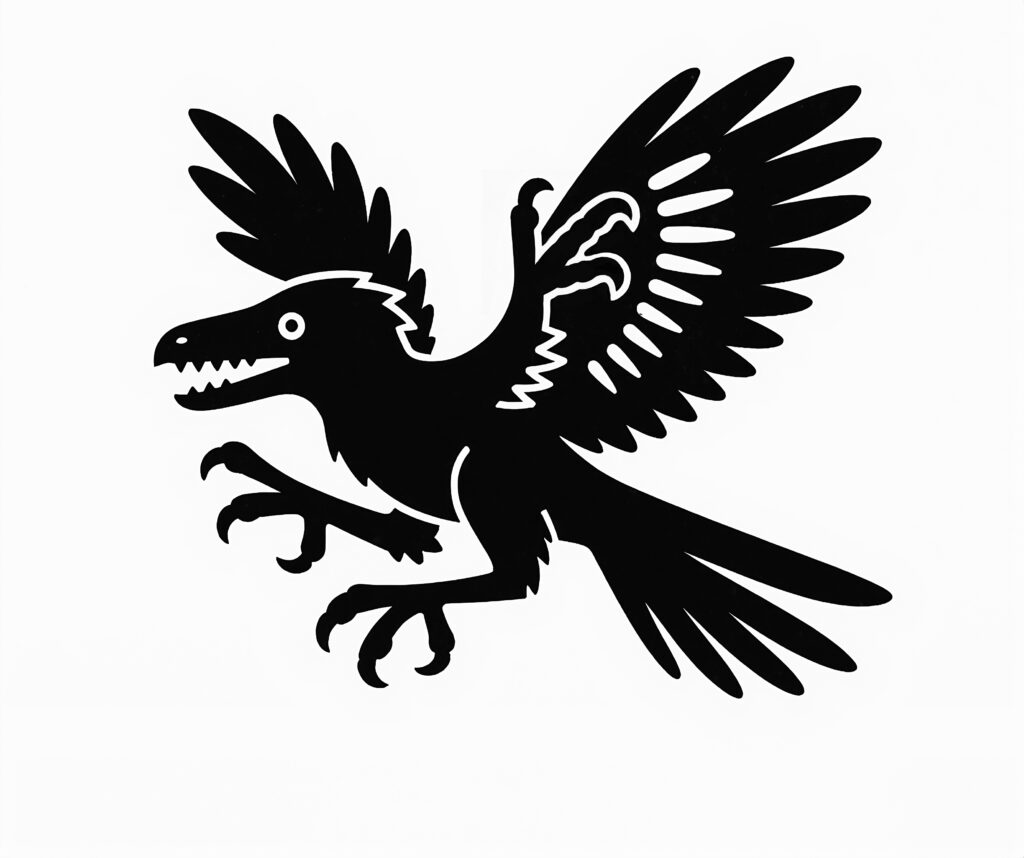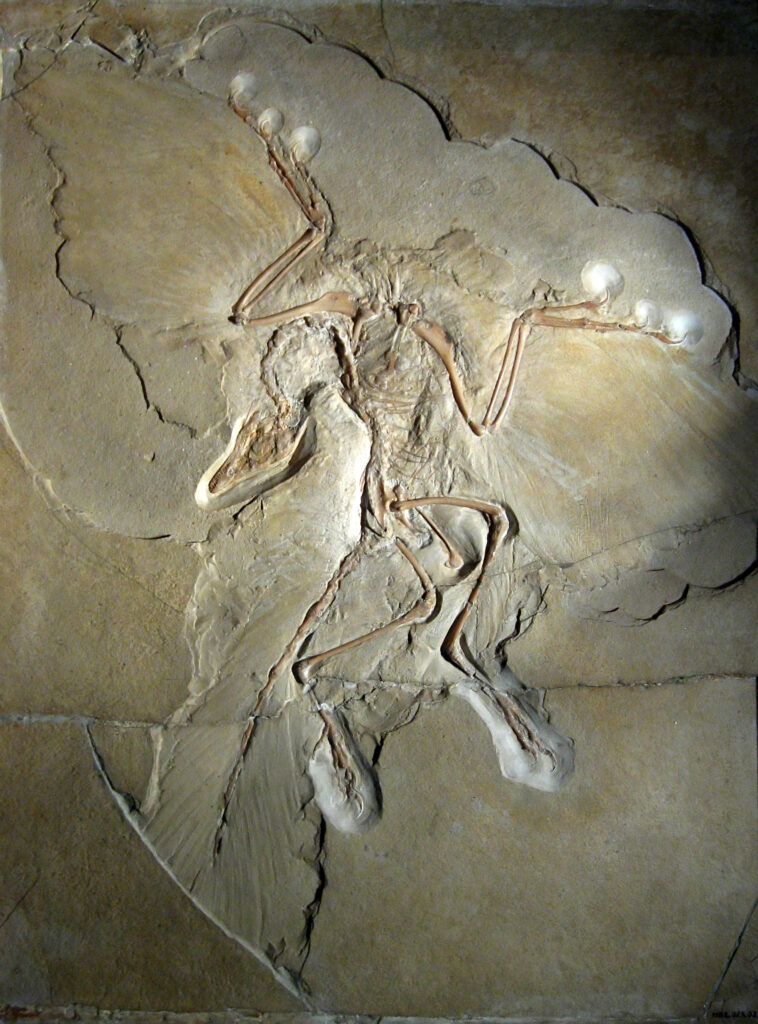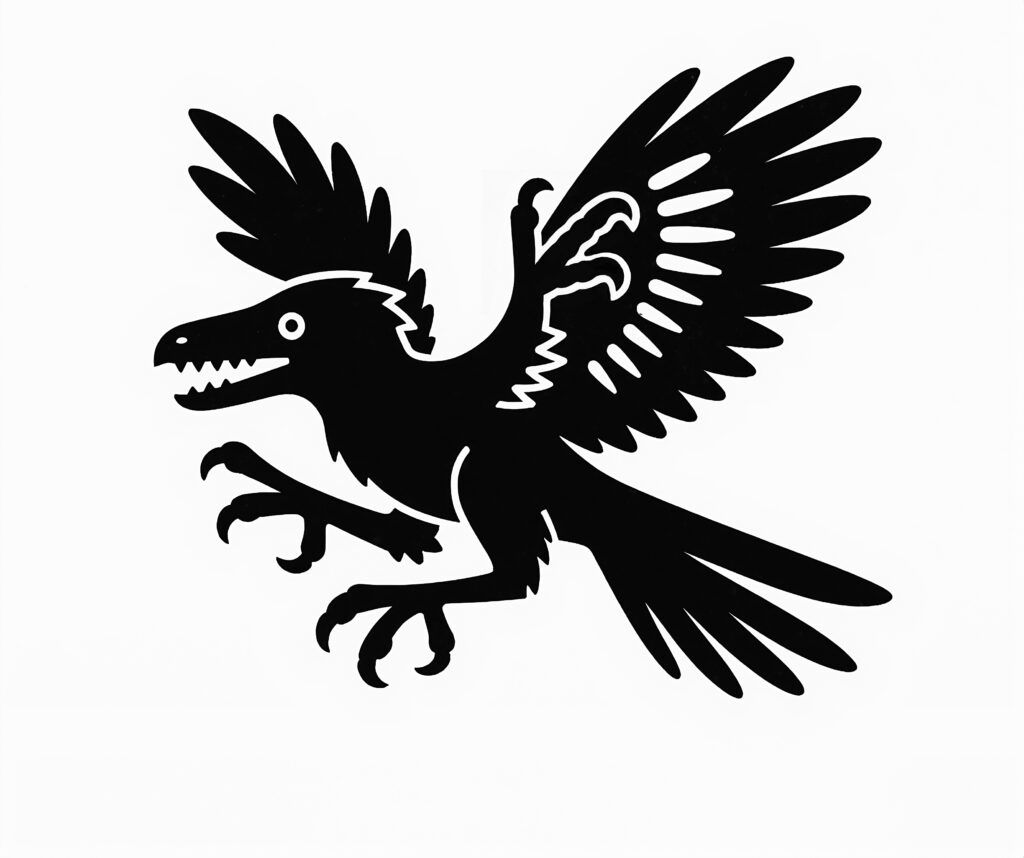Or rather: Why? and What?

I’ve named this website after Archaeopteryx for a number of reasons. Firstly, Because it’s among the best-known fossils and I’ve long occupied myself with the history of Paleontology. But perhaps even more importantly, it’s become one of the icons of science in general. Of course, I’m not referring to the icon I created above, but rather to the image below:

There’s a bit of a story here, of course. In short: a fossil combining avian and reptilian traits gets discovered and published in 1861, two years after the publication of Charles Darwin’s landmark thesis about organic evolution, On the Origin of Species. This specimen, known today as the “London Specimen”, was quite a fragmentary affair, but it clearly showed a reptilian tail and the unmistakeable imprint of feathers in the limestone slab. While it gained fame as one of the “missing links” everyone was looking for as proof of evolution, it was the second specimen of Archaeopteryx, the one pictured above, that made it famous shortly after discovery in 1876. This time, there was a skull((There was a skull in the first specimen as well, but it was only found later.)) which combined reptilian teeth with what looked like an avian head. Since that time, Archaeopteryx has held a central place in discussions around avian evolution.
For me, the Berlin specimen of Archaeoptery symbolizes the combination of (con)text and (optical) media that is central to my work.
